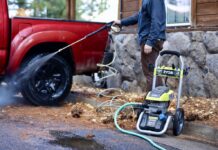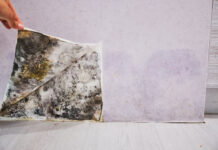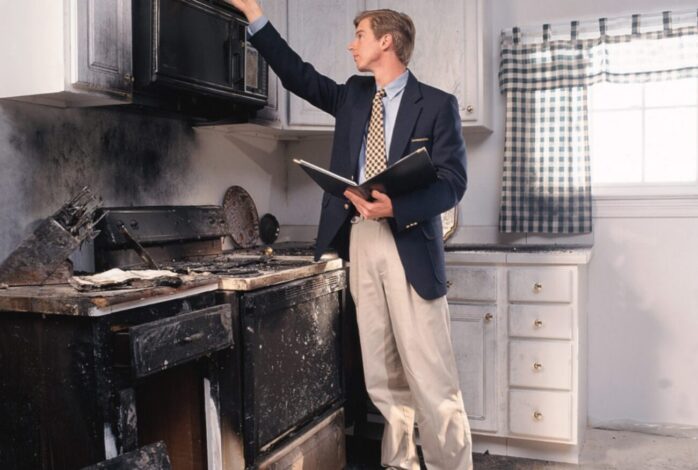
When a fire strikes, the aftermath can feel overwhelming. The path to recovery involves several critical steps, each designed to ensure safety, efficiency, and effectiveness in restoring your property to its pre-damage state. This comprehensive guide provides essential advice on fire damage restoration and cleanup, structured to help you navigate the process with confidence.
Immediate Actions Post-Fire
The immediate aftermath of a fire is a critical period. Quick and informed actions can significantly impact the safety of the occupants and the extent of the damage to the property. This section outlines the initial steps to take following a fire incident.
The first priority is ensuring the safety of all individuals involved. Do not re-enter the affected property until it has been declared safe by the authorities. Fires can compromise structural integrity and release harmful toxins, making it essential to wait for professional clearance. Once inside, wear protective gear to avoid contact with hazardous materials.
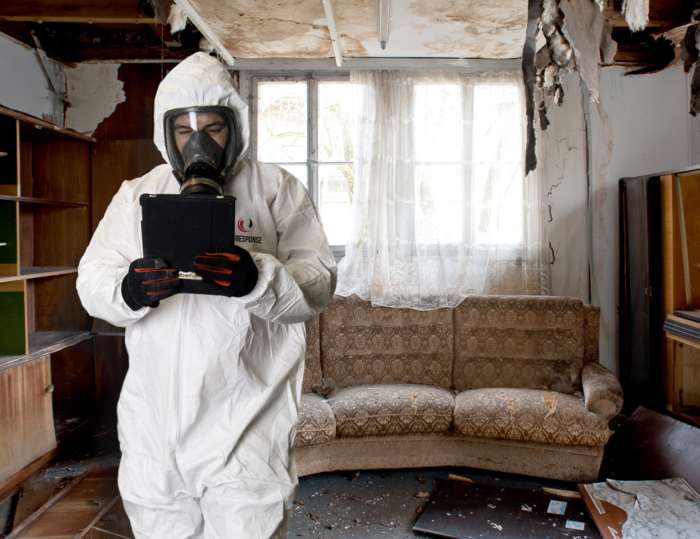
Professional Assessment
After addressing immediate safety concerns and documenting the damage, the next step involves a professional assessment by a reputable fire damage company. This stage sets the foundation for the restoration strategy, highlighting areas that require urgent attention and those that can be salvaged. Engaging with a fire damage company at this early stage ensures a comprehensive evaluation, guiding the subsequent restoration efforts with precision and expertise.
Hiring a professional fire damage restoration team is essential. These experts have the training, experience, and equipment necessary to assess the damage accurately and propose an effective restoration plan. Their assessment will include identifying the types of damage present, from structural issues to smoke and soot contamination.
Following the assessment, the restoration company will provide a detailed plan outlining the steps required to restore the property. This plan should include timelines, cost estimates, and a prioritized list of actions. It’s crucial to review this plan thoroughly and discuss any concerns or questions with the restoration team to ensure a clear understanding of the process.
Cleanup and Salvage
The cleanup phase is where the physical work begins. This stage involves removing damaged materials, cleaning soot and smoke residue, and salvaging what is possible. Proper execution of these tasks is vital for the overall success of the restoration process.
The first step in cleanup is removing debris and unsalvageable materials. This clears the way for in-depth cleaning of the structure, including walls, ceilings, and floors. Professionals use specialized techniques and products to remove soot and smoke effectively, preventing further damage and ensuring a thorough cleanup.
Salvaging personal items is a painstaking but crucial part of the cleanup process. Restoration experts can often restore photographs, important documents, and other personal items using advanced techniques. This process not only saves valuable and sentimental items but also helps in the emotional recovery from the fire.
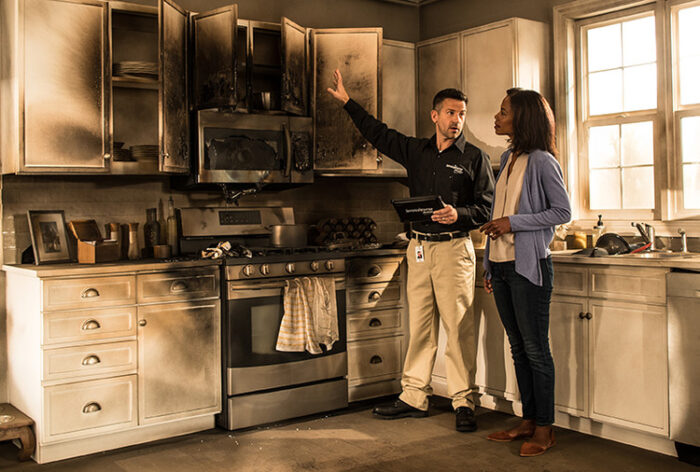
Smoke and Soot Removal
Smoke and soot can cause significant damage even after the fire has been extinguished. These byproducts can infiltrate every nook and cranny, leaving behind odors and residues that are harmful and difficult to remove. This section explores effective strategies for smoke and soot removal.
Soot removal requires specialized techniques to prevent further harm to surfaces. Restoration professionals use soot sponges, HEPA vacuums, and chemical sponges to gently remove soot without embedding it deeper into materials. This step is critical for preparing surfaces for deodorization and painting.
Final Restoration and Repairs
The final stage of restoration involves making repairs and restoring the property to its original condition. This phase can range from minor repairs to significant reconstruction efforts, depending on the extent of the damage.
This step includes repairing or replacing damaged structural elements such as walls, floors, and ceilings. In cases of extensive damage, it may involve a complete rebuild of affected areas. Professional contractors ensure that repairs meet all safety standards and building codes, restoring the property’s integrity and functionality.
The restoration process concludes with finishing touches like painting, installing new carpeting, and replacing fixtures. These final steps transform the space, marking the end of the restoration process and the beginning of a return to normalcy. Attention to detail in this phase ensures a high-quality finish, making the traces of the fire a distant memory.
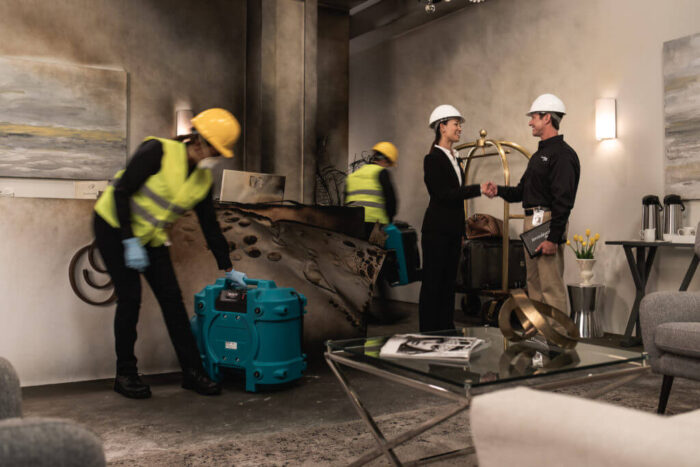
Understanding Insurance Coverage
Navigating insurance claims is a critical component of the fire damage recovery process. Property owners should promptly contact their insurance provider to initiate a claim. It’s important to understand the specifics of your policy, including coverage limits, deductibles, and the types of harm covered. Keep detailed records of all communications with your insurance company and submit the necessary documentation, including photos of the damage and a detailed inventory of lost or damaged items, to support your claim. An adjuster will likely visit the property to assess the damage, and having a clear understanding of your policy will help streamline this process.
Selecting the Right Restoration Company
Choosing the right restoration company is crucial for a successful recovery. Look for a service provider with certifications from recognized industry organizations, such as the Institute of Inspection, Cleaning and Restoration Certification (IICRC). Ensure the company has experience with projects similar in scope and complexity to yours. Obtain multiple quotes and check references to gauge their reliability, quality of work, and customer service. The right company will not only restore your property efficiently but also guide you through the complexities of the restoration process.
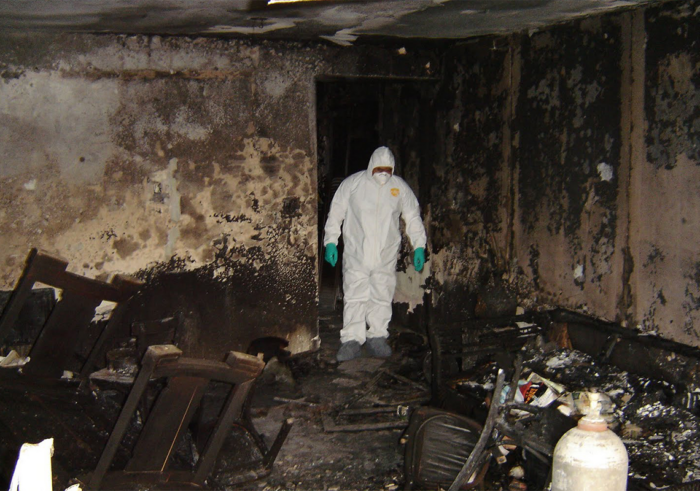
Health Hazards and Safety Precautions
Fire-damaged properties pose various health risks, including exposure to toxic chemicals, smoke residues, and structural hazards. Prioritize safety by wearing appropriate protective gear, such as gloves, masks, and goggles, when inspecting or entering the property. Be aware of the risks associated with ash and soot, which can contain harmful substances. Avoid disturbing these particles to prevent inhalation or spreading them throughout the property. Consult with professionals to address health hazards, ensuring the property is safe before resuming occupancy.
Conclusion
Fire damage restoration is a complex and demanding process that requires expertise, patience, and attention to detail. By following the outlined steps and working with professional restoration teams, property owners can navigate the aftermath of a fire effectively. The key to a successful recovery lies in prompt action, thorough documentation, and a commitment to restoring the property with care and precision. With the right approach, it is possible to recover from fire damage and restore a sense of normalcy and safety to your property.



